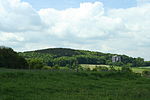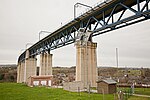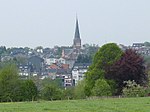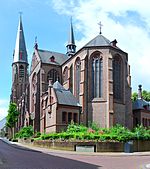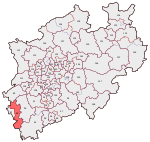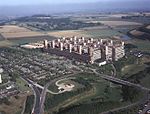Neutral Moresnet

Neutral Moresnet (French pronunciation: [mɔʁɛsnɛt], [mɔʁɛsnɛ], German pronunciation: [ˈmɔʁəsnɛt], [ˌmɔʁəsˈnɛt]) was a small Belgian–Prussian condominium in western Europe that existed from 1816 to 1920 and was administered jointly by the United Kingdom of the Netherlands (Belgium after its independence in 1830) and the Kingdom of Prussia. It was 1.5 kilometres (1 mi) wide and five kilometres (3 mi) long, with an area of 360 hectares (900 acres). After 1830, the territory's northernmost border point at Vaalserberg connected it to a quadripoint shared additionally with the Dutch Province of Limburg, the Prussian Rhine Province, and the Belgian Liège Province. Its former location is represented presently by the Three-Country Point, the meeting place of the borders of Belgium, Germany, and the Netherlands. During the First World War, Neutral Moresnet was annexed by Germany, although the allies did not recognise the annexation. The armistice between France and Germany in November 1918 forced Germany to withdraw from Belgium and Neutral Moresnet. A year later, the Treaty of Versailles awarded Neutral Moresnet to Belgium, effective 10 January 1920, when the territory was annexed by Belgium to become the municipality of Kelmis. During World War II, Kelmis and the area surrounding was again annexed by Germany and had its name reverted to Moresnet, but the territory was returned to Belgium during 1944.
Excerpt from the Wikipedia article Neutral Moresnet (License: CC BY-SA 3.0, Authors, Images).Neutral Moresnet
Ruhrstrasse,
Geographical coordinates (GPS) Address Nearby Places Show on map
Geographical coordinates (GPS)
| Latitude | Longitude |
|---|---|
| N 50.730277777778 ° | E 6.0133333333333 ° |
Address
Ruhrstrasse
4720 (Kelmis (Altgemeinde))
Liège, Belgium
Open on Google Maps

